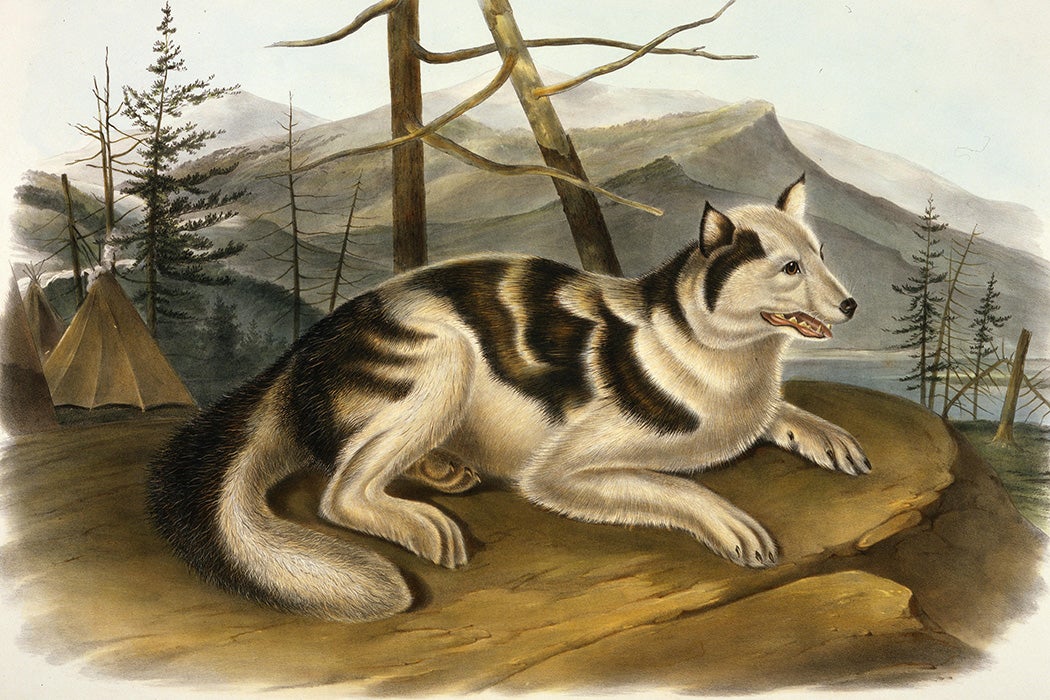Many people have a tendency to imagine North America before widespread European settlement as a pristine wilderness, ignoring the way human habitation shaped the continent for tens of thousands of years. Historian Strother E. Roberts offers a corrective to this view. He notes that the most prevalent large predator species in northeastern North America, aside from humans themselves, was the domestic dog.
Focusing on the area from the Great Lakes to the Canadian Maritimes, Roberts explores the economic, social, and ecological roles dogs played, drawing on reports by seventeenth-century European missionaries and traders.
These observers reported that dogs roamed through towns freely, entering human dwellings as they wished. They acted as guards, warning of the approach of strange humans, bears, or other intruders. In the winter, they snuggled up with humans, keeping them warm. And in agricultural cultures, they probably protected food stores against rodents (a job Roberts notes that dogs are perfectly good at, even if it’s often been assigned to cats in other parts of the world).
But dogs’ biggest material contribution to human life was as part of hunting parties. One French fur trader estimated that Mi’kmaq hunters each brought seven or eight dogs with them. Roberts estimates that would mean there were nearly as many dogs as humans in the society, or possibly more.
For many Native Americans of the Northeast, winter was the prime time for hunting. Dogs tracked and harassed game like moose, deer, porcupines, and snowshoe hares, making hunters’ work easier. With the help of their dogs, Native hunters even hunted black bears, something European hunters found daunting.
Thanks largely to the dogs, particularly cold and snowy winters could be a time of plenty for the Mi’kmaq and other northeastern people. Traveling with hunters who used snowshoes, broad-pawed North American dogs easily ran across snowpacks that were a challenge for deer and moose. They could also sniff out hibernating bears and porcupines.
On the other hand, in warmer winters with lots of wet snow, dogs fared less well as hunting companions and might end up as food themselves. Some of the European observers compared Native Americans’ dogs with Europeans’ sheep. Like sheep raised for wool and milk, dogs were usually more valuable alive than dead, but they had an additional role as an emergency food source. In some cases, dog meat served ritual purposes, or even acted as a dietary staple.
Weekly Newsletter
Nonetheless, Roberts writes, dogs could also be cherished companions. A missionary complained that the Huron held dogs “as dear as the children of the house.” One Innu story explained that other animals scorned dogs for their partnership with humans.
While dogs and humans are in some sense competitors, eating many of the same foods, the partnership worked out to their mutual benefit. Dogs shared in the bounty of the hunts they participated in and did their own hunting for smaller prey. Their friendship with humans allowed them to become one of the most successful mammals on the continent.
Support JSTOR Daily! Join our new membership program on Patreon today.







